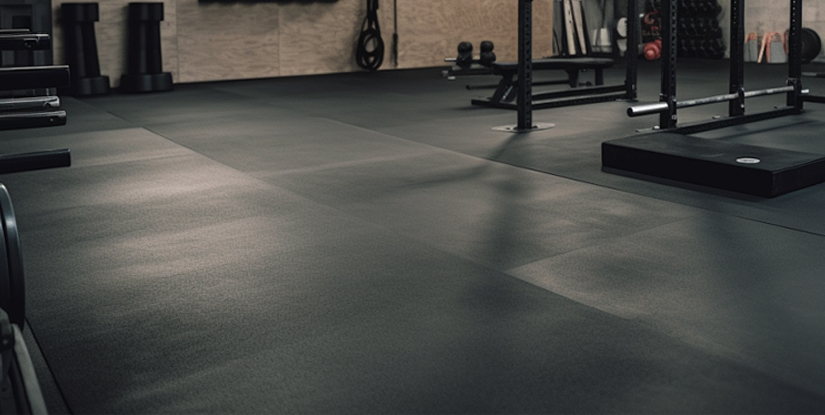Under Treadmill Mat: Protect Floors, Reduce Noise & Improve Stability

Under Treadmill Mat: Purpose and Benefits
An under treadmill mat is a specialized fitness accessory designed to protect flooring, reduce vibration and noise, and extend the life of both treadmill and surface. For home gyms, commercial facilities, and multi-use spaces, a properly selected mat improves equipment stability, prevents damage to hardwood, laminate, concrete or carpet, and helps minimize sound transmission to adjacent rooms.
Key Benefits
- Floor protection: Prevents scratches, dents and moisture damage from sweat or cleaning fluids.
- Noise and vibration reduction: Absorbs impact and motor vibrations to reduce rumble and neighbor disturbance.
- Stability and safety: Keeps the treadmill from sliding, reducing risk of accidents during high-speed workouts.
- Extended equipment lifespan: Reduces wear on treadmill feet and frame by distributing load and dampening shock.
- Cleanliness and maintenance: Collects debris and makes it easier to clean under and around the machine.
Materials and Construction
Treadmill mats are typically made from rubber, PVC, EVA foam, or composite materials. Each material offers trade-offs in durability, noise absorption, and cost:
- Virgin or recycled rubber: High durability, excellent vibration damping, suitable for heavy commercial use.
- PVC: Cost-effective, water-resistant, good surface protection but less effective for heavy vibration.
- EVA foam: Lightweight and affordable, provides cushioning but compresses over time under heavy loads.
- Multi-layer composites: Combine a dense base for vibration isolation with a durable top layer for abrasion resistance.
Sizing and Thickness Guidelines
Selecting the correct size and thickness is critical. Mats should extend beyond the treadmill footprint by at least 6–12 inches on all sides to catch debris and allow for safe mounting and dismounting. Thickness influences performance:
- 3–5 mm: Minimal protection for light machines, best for gym floors where only surface protection is needed.
- 6–8 mm: Balanced option for most home treadmills—good protection and moderate vibration damping.
- 10–15 mm: Recommended for heavy, commercial treadmills or when maximum noise and vibration isolation is required.
Compatibility and Load Considerations
Check the treadmill manufacturer’s recommendations for mat use. High-impact and heavy-duty models may require denser mats to prevent compression. Evaluate the combined weight of treadmill and user when selecting materials—softer foams may compress excessively under sustained loads, reducing effectiveness.
Installation and Care
- Placement: Unroll the mat on a clean, dry surface. Allow 24 hours to settle for heavy rubber mats if they are shipped rolled.
- Leveling: Ensure the floor beneath is level. Use adjustable feet on the treadmill for final alignment.
- Cleaning: Wipe with a damp cloth and mild detergent. Avoid harsh solvents that can break down PVC or foam.
- Inspection: Periodically check for tears, compression lines, or areas of permanent deformation and replace when protective properties decline.
Noise and Vibration Tips
To maximize noise reduction:
- Choose denser, thicker mats for motor and impact damping.
- Combine with rubber isolation pads under treadmill feet when necessary.
- Place the treadmill away from shared walls and avoid placing it directly over hollow or suspended flooring systems when possible.
Buying Guide
When purchasing an under treadmill mat, consider these factors:
- Dimensions: Match the mat to treadmill footprint with extra clearance.
- Material: Choose based on weight, noise concerns and floor type.
- Durability: Heavy-use environments warrant premium rubber or layered composites.
- Warranty and return policy: Check manufacturer coverage for flattening or material failure.
- Environmental factors: For basements or garages, choose water-resistant or mildew-resistant materials.
Environmental and Safety Considerations
Look for low-VOC materials if indoor air quality is a priority. Recycled rubber mats reduce environmental impact but confirm they meet safety standards and are free from harmful additives. Ensure edges are beveled or clearly visible to prevent tripping.
FAQs
- Q: Do I need a mat for a treadmill? A: Yes—mats protect floors and reduce noise and vibration.
- Q: What thickness is best for home use? A: 6–8 mm is a balanced choice for most home treadmills.
- Q: Can a mat prevent motor noise? A: It reduces vibration-related noise but not motor-originating sounds entirely.
- Q: Are rubber mats better than foam? A: Rubber is more durable and offers superior damping; foam is lighter and cheaper.
- Q: How do I clean a treadmill mat? A: Wipe with mild soap and water; avoid harsh chemicals.
- Q: Will the mat damage hardwood floors? A: High-quality mats protect floors; ensure cleanliness beneath to avoid abrasion.
- Q: Do mats slip on tile? A: Denser mats have better grip; anti-slip backing improves stability.
- Q: Can I use a mat outdoors? A: Most mats are designed for indoor use; choose UV- and weather-resistant options for outdoor use.
- Q: When should I replace a mat? A: Replace if compressed, torn, or if vibration/noise increases noticeably.

